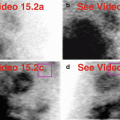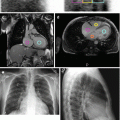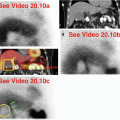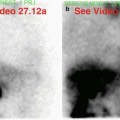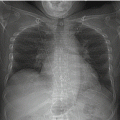and Vincent L. Sorrell2
(1)
Division of Nuclear Medicine and Molecular Imaging Department of Radiology, University of Kentucky, Lexington, Kentucky, USA
(2)
Division of Cardiovascular Medicine Department of Internal Medicine Gill Heart Institute, University of Kentucky, Lexington, Kentucky, USA
Electronic supplementary material
The online version of this chapter (doi: 10.1007/978-3-319-25436-4_25) contains supplementary material, which is available to authorized users.
A wide variety of diffuse and focal, unilateral and bilateral renal conditions may be detected on review of the raw SPECT MPI data (Table25.1) (Shih et al.2002,2005). A normal adult kidney measures approximately 11 cm in length. The size of the kidney can be quickly compared to the heart, and it should be slightly larger than a non-dilated heart. Increased visualization of the kidneys may be seen in liver failure as the kidneys are the alternate route of elimination (Fig.25.1).
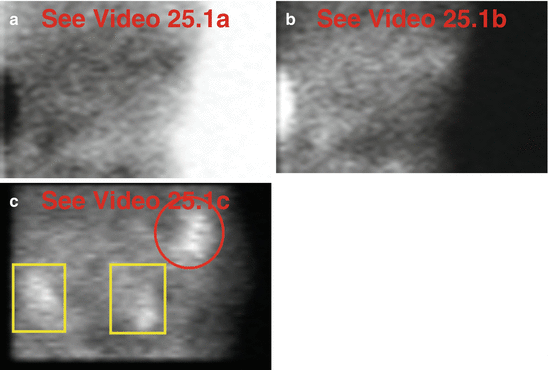
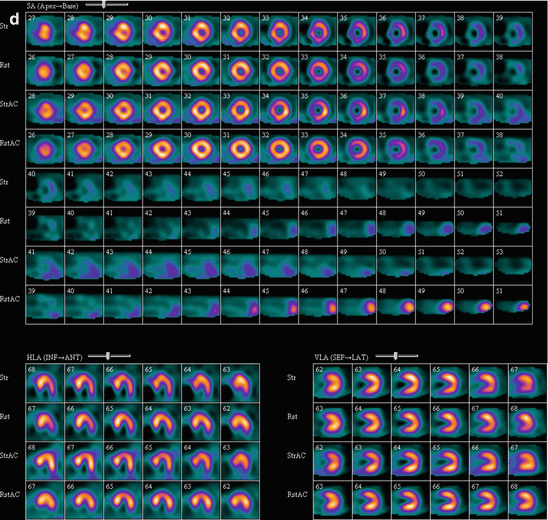
Table 25.1
Differential diagnosis of “hot” and “cold” imaging findings related to the kidneys and female reproductive system
Organ system | “Hot” finding | “Cold” finding | References |
|---|---|---|---|
Kidneys and female reproductive system | Retention of excreted radioactivity in dilated collecting system Stone disease Urinary catheters Physiologic in hepatic failure | Congenital absence/nephrectomy Ptotic or small kidney Atrophy/end-stage renal disease Scar/pyelonephritis Cyst/polycystic disease Neoplasm, primary (kidney, uterine leiomyoma) Neoplasm, metastasis | Chamarthy and Travin (2010) Garg et al. (2013) Gedik et al. (2007) Ghanbarinia et al. (2008) Howarth et al. (1996) Raza et al. (2005b) Shih et al. (2002) Shih et al. (2005) |


Fig. 25.1




“Hot” kidneys in liver disease. The 64-year-old female has elevated bilirubin and ascites. The liver is not seen, and there is virtually no intestinal activity—this is an extremely unusual circumstance. When the primary hepatobiliary route of clearance is impaired, the alternate urinary route becomes predominant (a–c). Note how different color rendering enhances recognition of this vicarious excretory pattern (c). There is normal myocardial perfusion (d).(a) Stress “black-on-white” raw projection images (Video 25.1a, frame 1),99mTc sestamibi. (b) Stress “white-on-black” raw projection images (Video 25.1b, frame 1),99mTc sestamibi. (c) Stress “white-on-black” raw projection image (Video 25.1c, frame 19, Anterior),99mTc sestamibi, kidneys (yellow boxes), heart for reference (red oval). (d) Stress/rest processed SPECT images (SA, HLA, VLA) (without and with AC)
Stay updated, free articles. Join our Telegram channel

Full access? Get Clinical Tree




